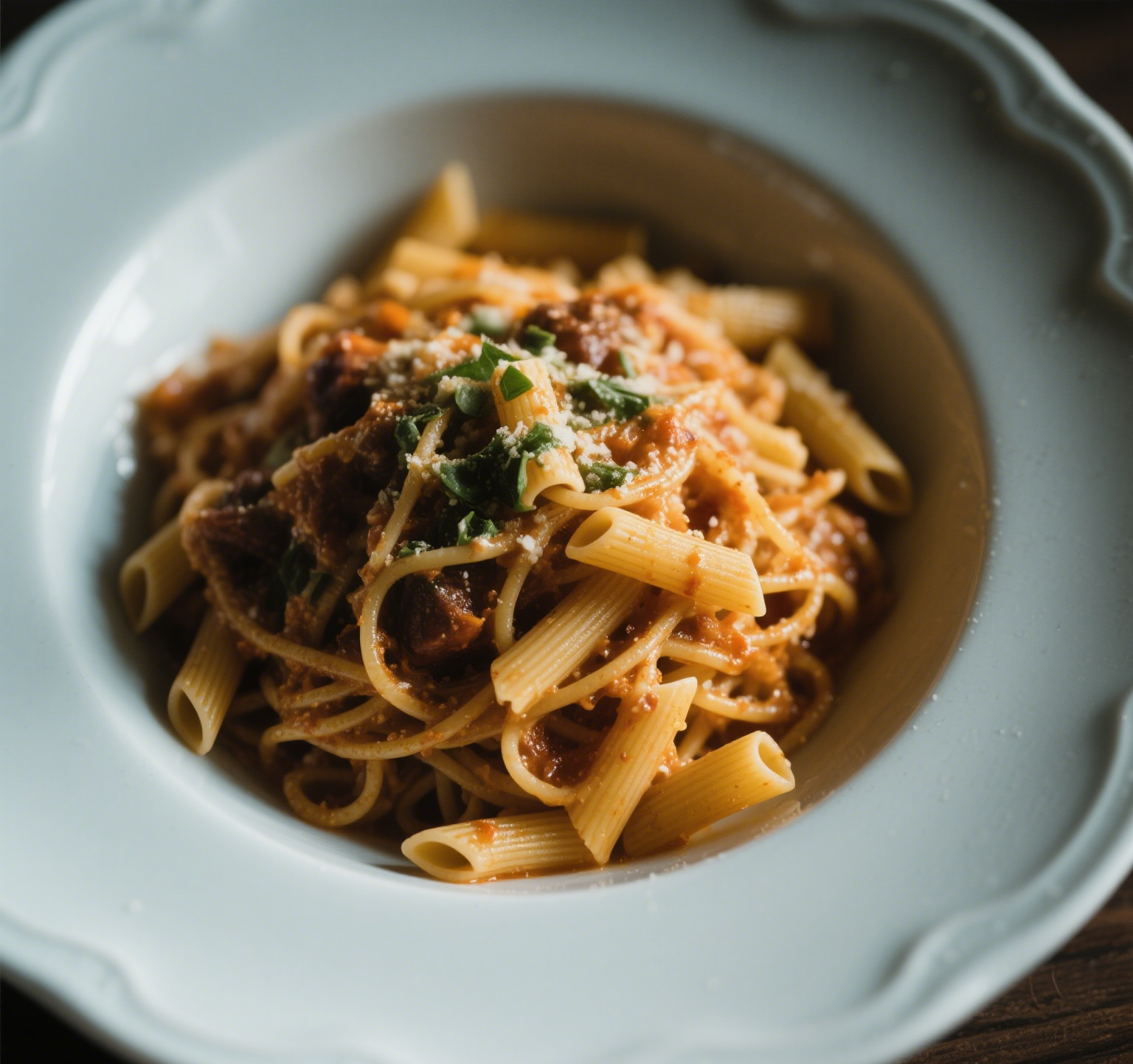The Truth About Your Favorite Comfort Food (Spoiler: It’s Not Evil)
Let’s talk about pasta—the carb-loaded, sauce-hugging, soul-soothing superstar of weeknight dinners. You’ve probably heard it all: “Pasta makes you fat!” “Carbs are the devil!” “Gluten will haunt your dreams!” But before you swear off spaghetti forever, let’s separate the marinara from the madness. Is pasta secretly a villain in a garlicky disguise, or is it just misunderstood? Grab a fork (and maybe a napkin—this gets saucy).

Pasta 101: It’s Not Just “Carbs in a Bow Tie”
First, let’s debunk the myth that pasta is a one-note wonder. At its core, pasta is simple: flour, water, and sometimes eggs. But here’s the plot twist—not all pasta is created equal. Traditional semolina-based pasta (the classic Italian kind) is rich in protein, B vitamins, and iron. Whole-grain pasta? Even better—it’s packed with fiber, magnesium, and antioxidants.
Fun fact: A cup of cooked whole-wheat spaghetti has roughly 6 grams of fiber—that’s like eating three apples’ worth, but way more fun because, well, it’s pasta.
The Great Carb Debate: Why Pasta Isn’t Your Waistline’s Nemesis
Let’s address the elephant in the room: “Carbs make you gain weight!” Wrong. Calories make you gain weight, and pasta is surprisingly moderate in that department. A typical serving (about 2 ounces dry) clocks in at 200 calories—less than a grande latte. The real issue? Portion distortion. Nobody eats “2 ounces” when there’s garlic bread on the table.
Golden rule: Pasta doesn’t make you fat. Misjudging portion sizes does. (Write that down and tape it to your fridge.)
Pasta’s Secret Superpowers
Turns out, pasta isn’t just a vehicle for cheese. Here’s why it deserves a spot in your “healthy-ish” recipe rotation:
- Energy for Days: Carbs = fuel. Pasta’s complex carbohydrates break down slowly, keeping you energized longer than that sad desk salad ever could.
- Mood Booster: Pasta triggers serotonin production. Translation: It’s basically edible happiness. (Take that, kale smoothies.)
- Nutrient Ninja: Enriched pasta is fortified with folic acid, iron, and B vitamins—key for everything from brain health to glowing skin.
Pro tip: Pair pasta with veggies, lean proteins, or healthy fats (think olive oil, avocado, or nuts) to balance nutrients and keep blood sugar steady.
But Wait…What About the Glycemic Index?
Ah, the GI argument—the favorite weapon of anti-carb warriors. Yes, refined pasta has a moderate glycemic index (GI), meaning it can spike blood sugar if eaten alone. But here’s the hack: How you cook and serve pasta matters.
- Al dente pasta has a lower GI than overcooked mush (chewy > soggy, both in texture and science).
- Chilling cooked pasta (hello, pasta salad!) increases resistant starch, which acts like fiber and slows digestion.
- Add toppings: Tomato sauce, veggies, or protein lower the overall GI of your meal.
Bottom line: Pasta isn’t a blood sugar boogeyman unless you treat it like a solo act. Be the DJ—mix in other ingredients.
Gluten-Free Pasta: Hero or Hype?
Unless you have celiac disease or gluten sensitivity, gluten-free pasta isn’t inherently healthier. Many GF pastas are made from rice or corn flour, which lack the protein and fiber of whole-wheat options. That said, brands like chickpea or lentil pasta offer a protein punch (up to 15g per serving!) for plant-based eaters.
Moral of the story: Don’t fear gluten unless your body’s waving a red flag. Otherwise, you’re just paying extra for FOMO.
How to Eat Pasta Like a Nutrition Pro
Want to turn pasta into a legit health food? Follow these chef- and dietitian-approved tricks:
- Go 50/50: Swap half your pasta with spiralized zucchini or spaghetti squash. You’ll fool your tastebuds and your waistline.
- Sauce Wisely: Skip heavy cream sauces. Instead, blend roasted veggies (butternut squash, cauliflower) into a creamy, nutrient-dense sauce.
- Leftover Magic: Refrigerate cooked pasta overnight. The resistant starch that forms helps feed good gut bacteria. (Yes, pasta can be probiotic-adjacent. Mind. Blown.)
Quote-worthy wisdom: “Pasta is like a good story—best enjoyed slowly and savored, not rushed like a drive-thru meal.”
The Final Noodle: Is Pasta Healthy?
In the epic battle of “carbs vs. clean eating,” pasta emerges as a surprising ally—not a foe. It’s affordable, versatile, and, when prepared mindfully, a balanced part of any diet. The key? Quality, quantity, and creativity. Choose whole-grain or legume-based varieties, stick to reasonable portions, and load your plate with colorful add-ins.
So next time someone says, “Pasta isn’t healthy,” smile and say, “That’s amore-scientist talk.” Then go enjoy that carbonara guilt-free.